Whether you’re new to using temporary electric polywire fencing in adaptive grazing or you are introducing new livestock to your regenerative ranch, you’ll likely find yourself in hot-wire training mode at some point.
The ranch managers at Noble Research Institute can relate. As Noble transitioned its seven research ranch operations to regenerative management, the ranch teams needed to train their cattle to respect the electric fences used to make temporary grazing paddocks. On top of that, when Noble increased livestock diversity by adding sheep and goats to their grazing rotations, the former “cowboys” learned how different small ruminants can be when it comes to hot wires.
Here are some of the hot-wire lessons three of Noble’s ranch managers say they have learned along the way:
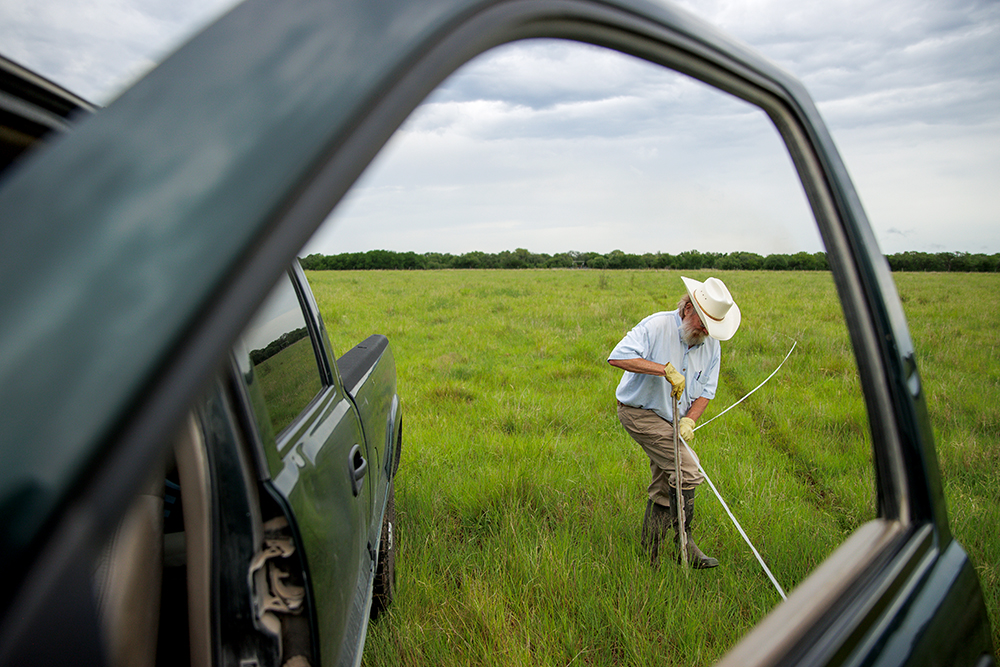
1. Hot wires are psychological, not physical, barriers.
Joe Pokay, Noble Ranches general manager, says “An electric fence is just a psychological barrier, so animals have to be trained to respect it.” And it’s the rancher’s job to do that with any new animals.
When he and the managers on Noble’s Oswalt Ranch were learning how to work with the goats they brought in, they trained the first batch in a permanent pen with a three-polywire fence across it as a barrier. After that, the goats did well respecting the fences out in the pasture.
“But when we got more goats, we didn’t take the time to train them exactly the same way, figuring the goats we already had would train them,” Pokay says. Nope. They had to try several times to train them out in the pasture, and “once we got it right, it was fine.”
The good news, says Red River Ranch manager Kevin Pierce, is that calves, kids and lambs born on the ranch learn on their own at a very early age not to go near the wire.
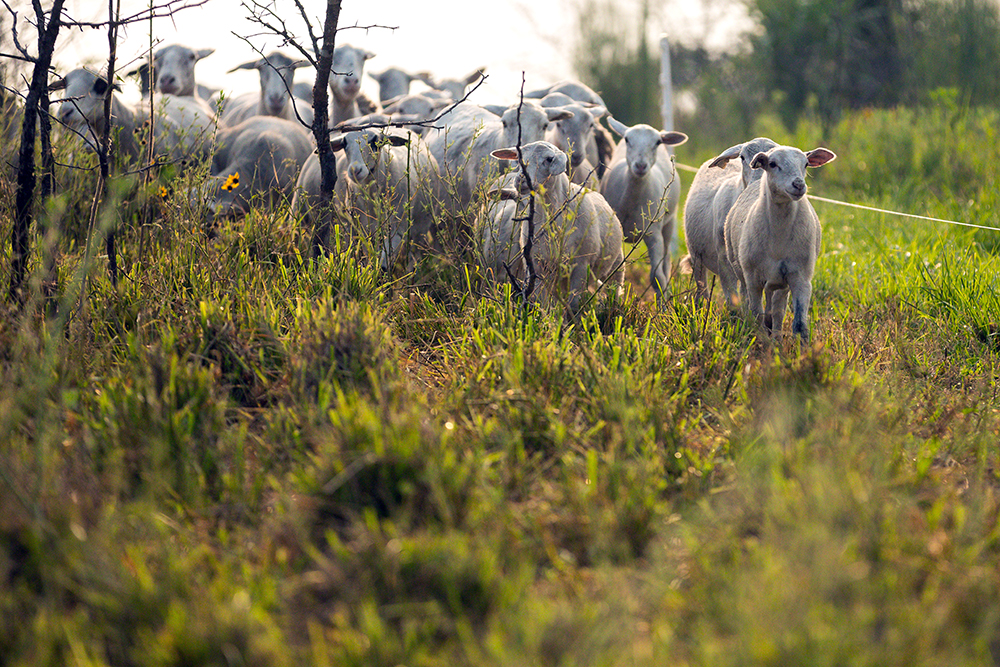
2. Cattle are easy to train to hot wire. Sheep and goats are a different story.
Of the three species, cattle are the most respectful of hot wire and usually can be contained with just one wire. Goats need to be trained with more than one really hot wire, and usually take more time to learn their lesson; sheep are somewhere in between. The small ruminants don’t seem to sense the electrical field until they’re right at the wire unless it’s really hot.
“When the cows are really trained, they won’t walk over a downed wire,” Pokay says. “I’ve had barbed wire lying on the ground while building new fence, and when I tried to move cows through a gate, they wouldn’t even walk over a barbed wire.”
Paul Luna, manager of the Noble headquarters ranch, recalls moving a group of bulls to fresh forage that “took right off at a dead sprint. I had a single hot wire as a cross fence, and I would have sworn they were going to run right through it. But every one of them just put on their brakes and stopped on a dime when they saw that fence.”
When it comes to goats, though, “For some reason they don’t respect hot wires as well,” Luna says. Their horns keep them from being shocked at first, “then they’ll get their head through there, and by the time they get shocked, they just keep going through it.”
Pierce agrees about sheep and goats and hot wire. “For some reason, they think they need to test it more often than a cow does. But you can keep them in with hot wire. It just takes a little more effort.”
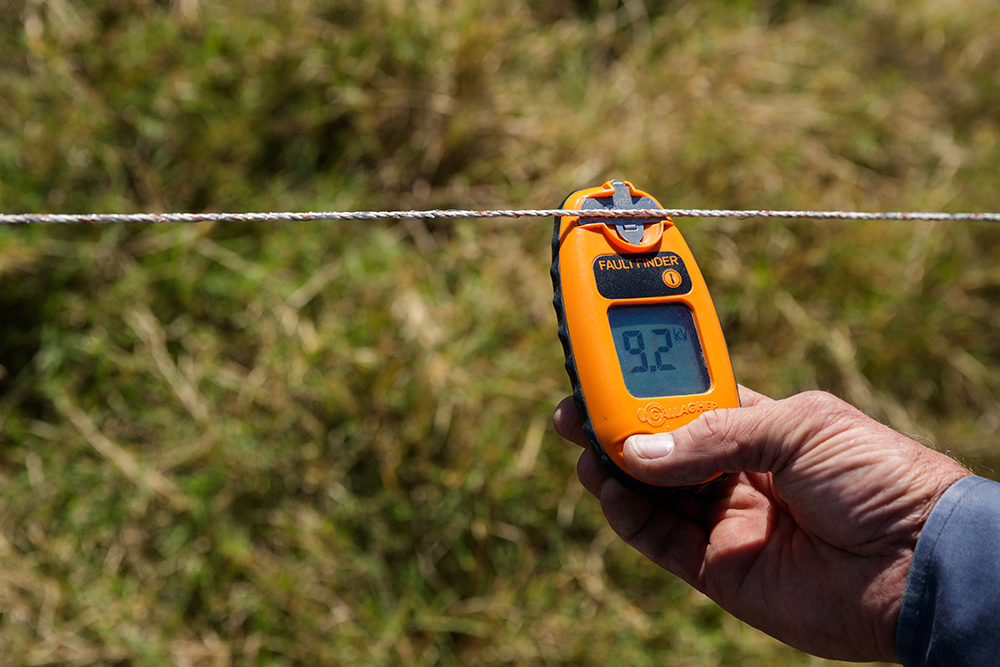
3. Use a training paddock and have the wire plenty hot.
“I would put it up just like the fence they’re going to be behind, and maybe tie some surveying ribbon to it so they can see there’s something there,” Pierce says. “They’re going to be curious, and they’re going to get shocked, and they’re going to tear it down a few times before they figure out that ‘Hey, that hurts. Now we can walk around it and go get a drink and everything’s fine.’”
Pokay agrees that it’s important to train with the same wire that will be used in the pastures, so the animals get used to seeing it. And he says using a permanent pen really helps so you don’t worry about them actually getting out during training.
All three managers agree that it’s essential to have the training wire in good working order and charged enough to be hot, especially hot enough to shock sheep and goats.
“You want the first experience to be an actual shock,” Pokay says. “You don’t want them to come up and think ‘oh, that kind of tickled. I don’t really need to respect this thing.’”
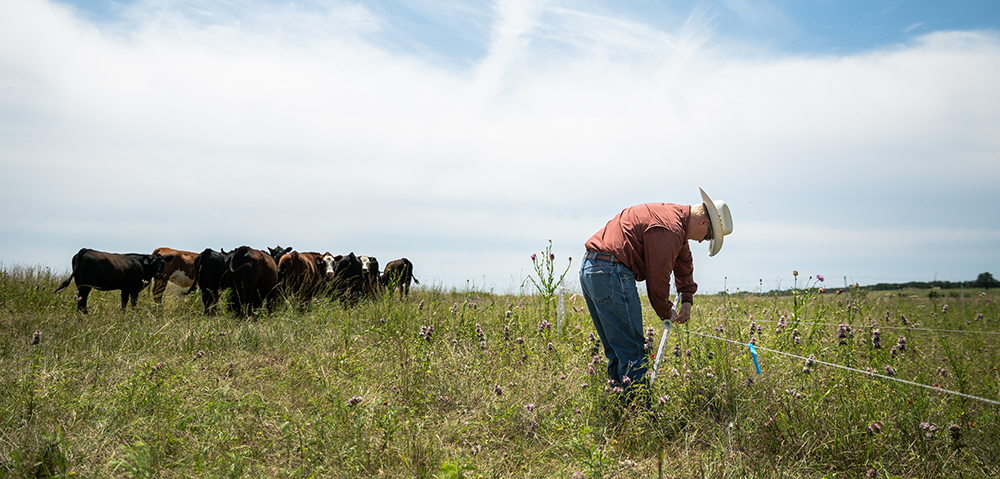
4. Don’t skimp on charger or polywire quality, especially for training.
Pokay likes dual-purpose chargers that can be plugged into AC power at the training pen and then put on a solar panel and moved to the pasture. “They’re efficient, and you don’t have to buy two.”
Using quality polywire that carries adequate current is important, too, as is being sure fences are built tight, kept clear of weeds and other power-draining problems, and maintained well. You may want to mow in the path of an electric fence, or route temporary cross-fences around the taller forage, especially for small ruminants.
“You can’t just treat it like a barbed wire fence, like there’s no maintenance to it,” Pierce says. Even animals well-trained to hot wire will eventually figure out a fence isn’t hot.
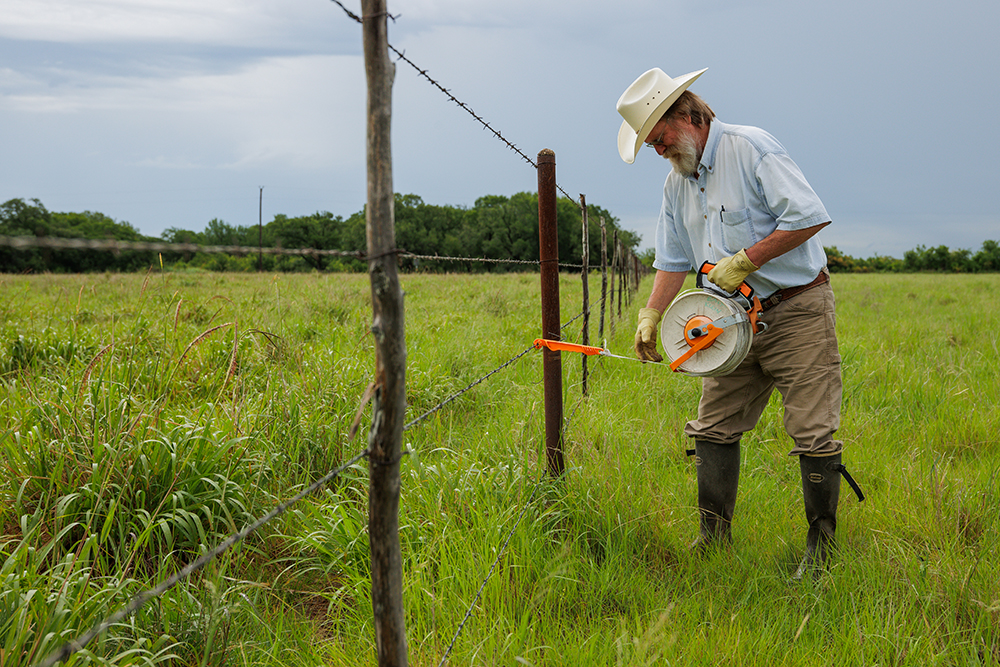
5. Be patient and consistent.
When training, in addition to using the same materials the livestock will encounter in the pasture, it pays to be patient and consistent in your approach. Expect it to take a day or two in the training paddock for the animals to get used to the hot wire.
Through trial and error as you train, you’ll learn what works best for you and your animals – if feed or water encourages them to walk about the fence; if they need to be guided in the first time or two; how much time they need to just navigate and learn on their own.
When you do turn them out into the bigger pasture, try flagging the fence with surveyor’s tape so they can see the wire, and consider heading off a run-away break-through by meeting them at the temporary fence.
“We knew what end they were going to run to, so we’d get on the other side of the fence to at least slow them down once they got there,” Pierce says of turning out newly trained stock. “Then they could sniff around, and maybe get shocked. But once they get shocked, they’re done with it.”
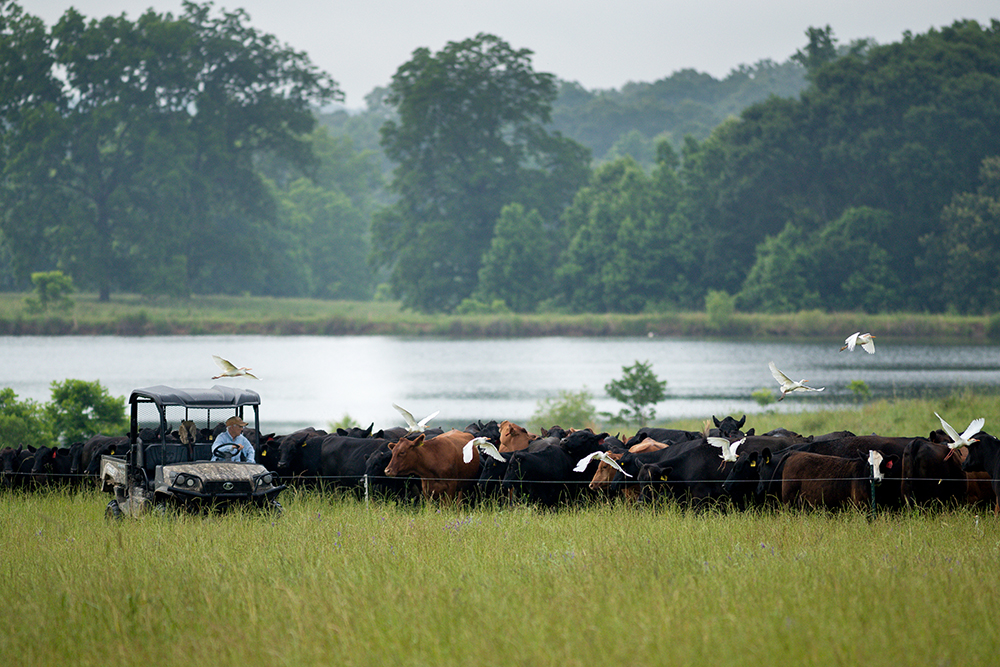
6. Adequate forage and good water keep livestock from wanting to challenge a fence.
Pierce says one or two hot wires will hold his sheep and goats as long as they are happy and have what they want to eat, but if they run out of what they like, “they can get out of the hot wire anytime they want to. Now, cows are a little bit different,” he says. “They can eat up everything, and still, they’re more respectful to a fence.”
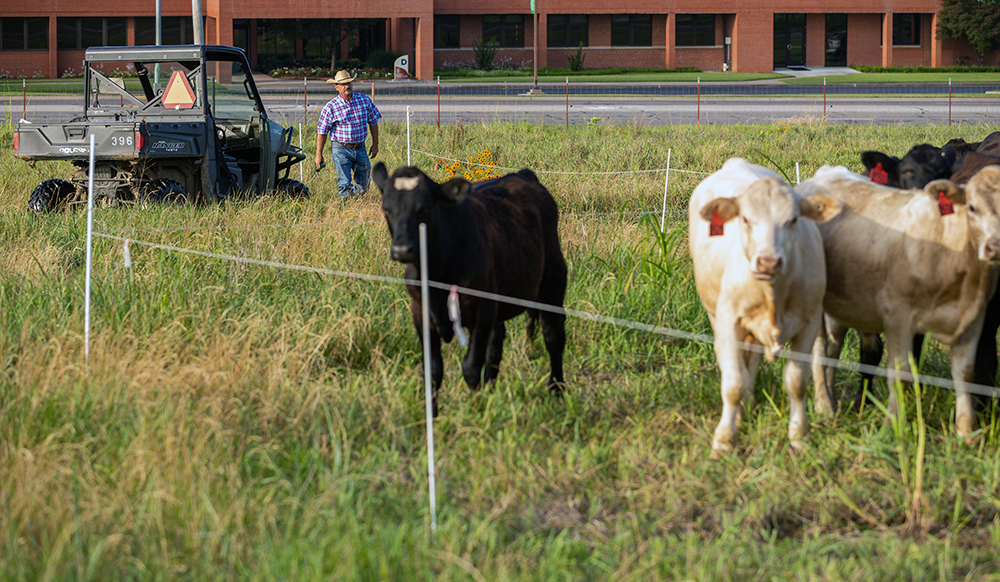
7. The up-front time spent training to hot wire before turn-out is well worth it.
All three managers agree that the time invested in training animals at the start pays dividends, including allowing the use of fewer strands of wire for temporary grazing paddocks.
“I had about 36 bulls and 63 goats grazing together, and I just used one wire about knee-high,” Luna says. The bulls don’t jump it even though they could, and the goats respect it most of the time.
“And yet, I’ve got four sheep that’ll keep going through the fence no matter what,” he says. “But they’re usually grazing right where they got out.”
To see how Pokay and Pierce managed the large herd of goats introduced to Noble’s Oswalt Ranch in 2022, watch Episode 5 of the Noble “Regenerating the Ranch” docuseries on YouTube: Adding 500 Goats to Our Ranch. Also see Luna Building a Solar-charged Polywire Paddock for Rotational Grazing.
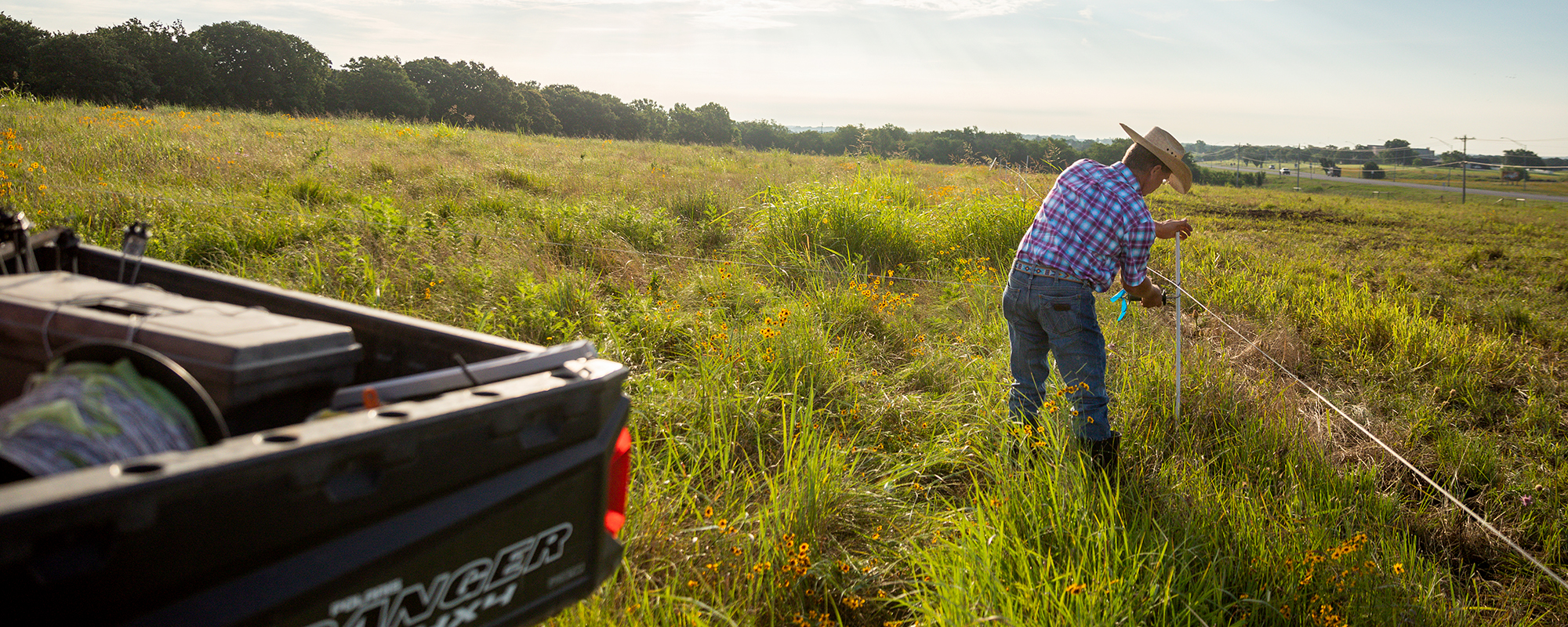

Hello, I’m interested to read from Marilyn Cummins publications on regenerative agriculture and marketing the products of. I’m a Veterinarian from Bangladesh.
Thank you.